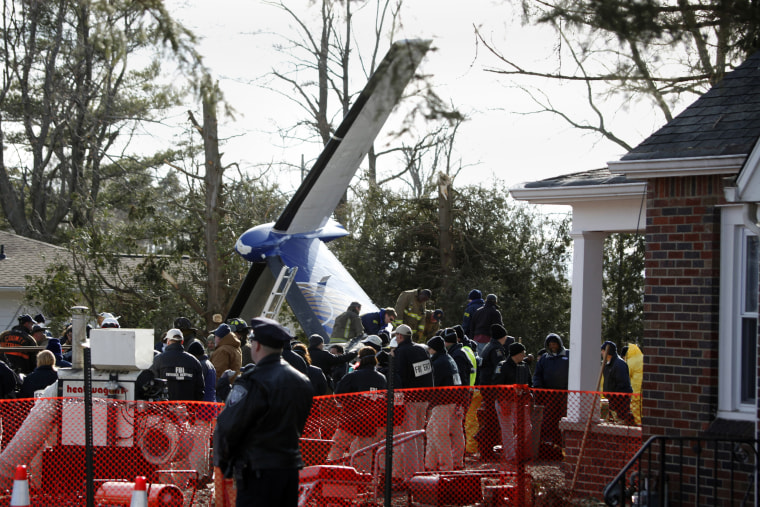Twelve years after Colgan Air Flight 3407 crashed, the loved ones of the 50 victims finally got from the federal government what they’ve long been demanding — a pledge to create a U.S. database to keep track of bad pilots.
But it could be a few more years before that long-awaited database is fully implemented.
The Federal Aviation Administration on Wednesday gave the green light for the creation of a pilot records database in which the employment history, training, qualifications, and drug and alcohol histories of pilots would be collected — and which air carriers would be required to consult before making a hire.
“It’s been a long journey for the families of Colgan Flight 3407, but their tireless advocacy and continued engagement with the FAA has made this database a reality,” FAA Administrator Steve Dickson said in a statement. “With it, employers will be able to quickly and thoroughly make informed hiring decisions to keep our skies safe.”

Marvin Renslow, the pilot at the controls of Flight 3407, had failed the FAA’s pilot competency examination, commonly known as a “checkride,” three times before he was hired by Colgan Air, a regional carrier owned by Pinnacle Airlines that went out of business after the deadly crash Feb. 12, 2009. He too was killed.
“Had we known what we know now, he would not have been in that seat,” Pinnacle Airlines President Philip Trenary said at a Senate hearing on the crash in August that year.
The push to create such a database began not long after the plane from Newark, New Jersey, to Buffalo, New York, with 49 people aboard, went down and crashed into a home in Clarence, New York. Doug Wielenski, 61, the owner of that home, was also killed.
The FAA has until June 11 to publish the final rule in the Federal Register and it will be several months before operators are required to use the database. Operators will have until about December before they have to start reviewing existing FAA records in the database and won't be required to submit records to the database until around June 2022, according to a copy of the final rule already online.
But the timeline remains somewhat unclear as the final rule also states that operators actually have three years and 90 days from the day the FAA publishes the new rule to "fully comply" with it, the copy states.
Asked for further clarification on the rollout timeline and, in response, the FAA said: "This is the maximum amount of time operators have to implement the rule. The FAA urges operators to work to implement the rule as quickly as possible."

Relatives of the Flight 3407 victims said the sooner this gets done the better.
“It’s really incredibly important, in light of what happened with Flight 3407, that an airline have a full and complete picture of a pilot’s records,” Susan Bourque, whose sister, Beverly Eckert, died in the crash, told The Buffalo News earlier. “This will ensure what happened will never happen again, as opposed to how the system was set up in the past. That’s the whole reason behind this legislation.”
National Transportation Safety Board investigators suspected early on that Renslow made a deadly error by leaving the plane on autopilot as ice built up on the wings and tail. By the time the plane went into a 26-second plunge — and the controls snapped back in Renslow’s hands — there was no time to make a distress call.
In the wake of the tragedy, Congress in 2010 demanded that the FAA create an electronic pilot records database. But a test version the agency unveiled in 2017 wasn't functional.
So the agency was given until 2020 to come up with a new version and the FAA missed that deadline again, according to published reports.
Meanwhile, the families of the victims continued to press Congress for action, and in 2019 the NTSB cited the FAA’s failure to create the database as a contributing factor in the crash of an Atlas Air cargo plane outside Houston that killed three people.
Pilot error was to blame, the NTSB concluded.

